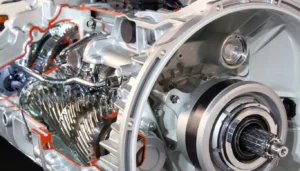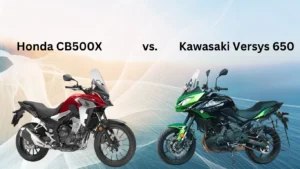The cost to wrap your motorcycle varies from $1000 to $5000, or the average price will lie between $1000-$2500, and for high-end finishing, the cost can go up to $5000 & beyond. It is also dependent on the quality of the wrapping and wrapping materials.
Generally, bike riders or professionals use vinyl wrap to wrap their motorcycles, which costs around $1500 to $4,000. Although it’s the most demanding market, if you go for the other materials, you may need to invest $1000(minimum range) to $5000+. If you are unable to pay this much, you have more alternatives. Buy vinyl sheets, which are usually available for under $100.
There are many reasons for getting a wrap. Some need it for personal reasons. Businesses need to take advantage of their fleet of automobiles and reinforce their branding.
Whatever your motives, put together a price range to live within your limits. Perhaps you’re gaining knowledge of how a good deal it values to wrap an automobile to set your price range; great!
What factors into the cost?
Is there an easy solution to the query of value for wrapping? Unfortunately, no.
Every automobile wrap process is specific, with various variables deciding expenses. It includes the size of the motorcycle, partial or complete wrap material, etc.
We use these variables to calculate the total rectangular footage, the hard work required, and the value of substances. Different minor variables affect value, the number of small portions, and design.
Costs for different materials:
The splendor of wrapping an automobile is the style of selecting alternatives from different colors, finishes, and different substances.
The aesthetic look has a vast quantity of choices. While the hard work might also add a few extra ounces among exceptional substances, the wrap material is the most critical element in rate differences.
If you’ve got a restrained price range, the motorcycle wrap corporation will imply which substances are healthy in your price range.
Let us help you with different materials and their costs.
- Vinyl Matte charges an average price, costing around $2 to $3.5 per square foot. It may vary as per your location and market.
- Vinyl gloss is the cheapest and lasts longer; you can buy it for under $3 per square foot.
- Chrome wrapping is another option that starts from $8 per square foot and can increase as per the quality.
- The next one is Carbon Fiber, which ranges from $3 to $7 per square foot, and you can easily afford it.
- And the last one is the most expensive wrap material; Metallic Cast Vinyl costs around $9.
How much will it value to wrap a Motorcycle?
Although a motorcycle is small, it has more exhaust than a car: additional elements, other curves, and additional issues.
Wrapping a bike can be worth just about $1,500 to $4,000, depending upon the pleasantness of the material and the variety of elements.
Is wrapping your motorcycle illegal?
The first question everybody answers is the most common one, i.e., are area unit wraps legal?
The solution to this question, if we follow the letter of the law strictly, is No. Wraps permit individuals to modify vehicle color, which may result in massive problems if motorcycles fall into the hands of thieves.
However, choices that don’t change your vehicle’s color area unit are undoubtedly not fire retardant.
Is there any means that you will wrap your motorcycle and avoid legal problems
The answer is affirmative, though it will accompany one significant caution. People state that those who want to wrap their vehicles must remain in their original color.
He says those who wish to cover their bikes should stick with the color option mentioned on the registration certificate to ensure that the vehicle passes any inspections by eager cops looking to catch offenders.
If the color is the same or similar, the cops will not likely bother you. We agree.
Whether a wrap in the same color is legal or not is a question that a cop would not want to bother with and is something that will be unclear until the motor vehicle departments of states or courts decide. So chances are, you will be safe (though in a legal gray area) with a wrap of the same color.
Will you’ve got to re-register your vehicle if you apply a wrap
The answer to the question is no, not any. Wrapping your vehicle doesn’t require you to re-register your bike or automobile.
However, changing your vehicle’s color by repainting will require an amendment of your RC and a visit to the RTO. If there’s any issue, you can remove the wrap.
However, a replacement paint job most definitely can’t be fired, which is why you would like to have your RC modified.
Is wrapping your bike good?
Yes, wrapping your bike is good, but repainting the motorcycle is not a good idea because repainting in another color needs to go through the legal process; otherwise, you may face legal procedures.
Pros of Wrapping
- It’s a reversible process; thus, if you get bored, you can pull it off and begin once more or return to the initial color.
- If it becomes broken, merely redo it, although the wrap can last for years.
- It acts as a protective layer, keeping your paintwork in excellent condition.
- If you scratch a panel, you can virtually rewrap it, which is less expensive than a paint job.
- Provides cost-efficient customization choices for texture, colors, and materials that may ordinarily be valuable.
- At a look, you can’t tell it’s a wrap and not a paint end. The wrap provides high-end quality paint at a fraction of the value.
Can I wrap my motorcycle?
Yes, of course, but it’s pretty risky. Risk in the sense that if you do not put in the total effort and don’t know the process, you can lose your money as well as damage the original color.
Let’s take the example of vinyl wrapping.
Now that you’ve created your own call to vinyl wrap your motorbike let’s look into every step you want to follow meticulously to perform the DIY with brilliance. Let’s begin!
1. Fix your budget: You can’t do anything without calculating the final budget. Do some research on the wrapping materials available on the market. Don’t go for the cheaper materials; it’s better to dig for durable and good-quality vinyl wraps.
2. Get Ready with Tools: Before wrapping, gather all the tools. Wrapping doesn’t require many materials; you should have a squeegee, lint-free cloth, isopropyl alcohol, a heat gun, blades, vinyl sheets, etc.
3. Remove The Parts: Don’t try to wrap your bike directly; it’s not like cars. Before wrapping your motorcycle, disassemble all parts carefully.
4. Clean The Bike and Area: After removing the parts, clean the motorcycle, as you can’t put the wraps on a dusty and muddy bike. And also, wash your workplace, which may create issues while working on your motorcycle.
5. Measure Bike Parts: Next is to measure the individual parts and cut the vinyl sheets. Cut one to two inches extra, as you will need to wrap from the inside.
6. Wrap The Parts: Start wrapping; it’s not easy to handle alone. You may need two partners; hold the sheets one or two inches above the surface to stretch and wrap the bike quickly. In the end, check for impurities and then place the sheet.
7. Use Heat for Complicated Areas: For complicated areas, you will require heat. Please ensure the heat isn’t too high, as it may burn the sheet. Heat the locations for a few minutes so the sheet will stick perfectly.
8. Avoid Bubbles: Remove the wrap quickly if you notice any bubbles. But removing the imperfections won’t be easy if you have applied pressure to cover the bike. So you can peel the wraps before the vinyl adhesive property is active.
9. Wrap the Edges and Remove Surplus: Move to the underside, cover the edges, and clean the bottom. Cover the underside at least 15 mm and trim the extra sheets with the help of sharp blades.
10. Heat Seal The Wrap: Now that you have covered up the entire bike, heat seal the vinyl wrap. Overheating and underheating can ruin the desired result; 80-90 °C heat is enough to fix the wraps.
How Do You Wrap a Motorcycle Exhaust?
First, you’ll want to determine whether or not you want to wrap your motorcycle exhaust. Whether to do it or not is a choice that we take away from you entirely.
Wrapping the motorcycle exhaust is the same as covering the other parts.
But before making a decision, it’s well worth the time to recognize the advantages and disadvantages of wrapping your motorcycle exhaust.
Let’s begin with the advantages of wrapping your motorcycle exhaust:
Significantly reduces radiant warmth:
one of the pinnacle advantages you’ll experience from masking your headers and tailpipes with the wrap is a massive discount on radiant heat.
It, in turn, causes less discomfort, mainly while using your motorcycle in warm summertime weather.
Stylish looks: If your motorcycle pipe has emerged as old and unsightly.
Wrap it with the top-quality materials available on the market for motorcycle exhausts that can give it a brand-new life and make your motorcycle more stylish.
It will assist you in shopping for lots of cash instead of investing in a brand-new exhaust device.
Increased performance: Motorcyclists are loopy about wrapping their pipes because it enhances their engine performance.
In theory, the act of those wraps maintaining the engine working at decreasing temperatures translates to improved performance.
However, there are numerous evaluations of the performance of those wraps on growing engine horsepower.
Drawbacks to motorbike exhaust wrapping:
Causes pipes to overheat:
You heard it correctly, and those wraps provide immoderate warmth, which could cause overheating of your tubes, with titanium pipes being surprisingly vulnerable. It can shorten the lifespan of your motorcycle exhaust device and pressure you to spend quite a few coins on replacements.
Looks may go to pot with time: the wraps tend to wear down and appear crappy quicker, particularly for riders who ride in rugged terrain. In this manner, you’ll want to do ordinary rewrapping to hold them, searching for a fresh
Installation is time-consuming; you may want to recognize that this isn’t a short DIY project. You’ll want to rip your motorcycle apart, do away with the exhaust pipes for wrapping, and position them correctly. And while you put on the wrap, you’ll want to do the wrapping throughout again.
Does exhaust wrap cause rust?
Any steel pipe can rust over time with or without exhaust wrap.
If you wrap any reasonable tube, we suggest using HT polymer coating to seal and defend the wrap and even the pipe you’re wrapping by coating the pipe first before you add the exhaust wrap.
Conclusion:
We hope we can clear up any doubt concerning how much you have to pay to wrap your motorcycle. If you’re happy with our article, please share it with your friends and family. Please subscribe to our newsletter for many knowledgeable articles and share them with us.






